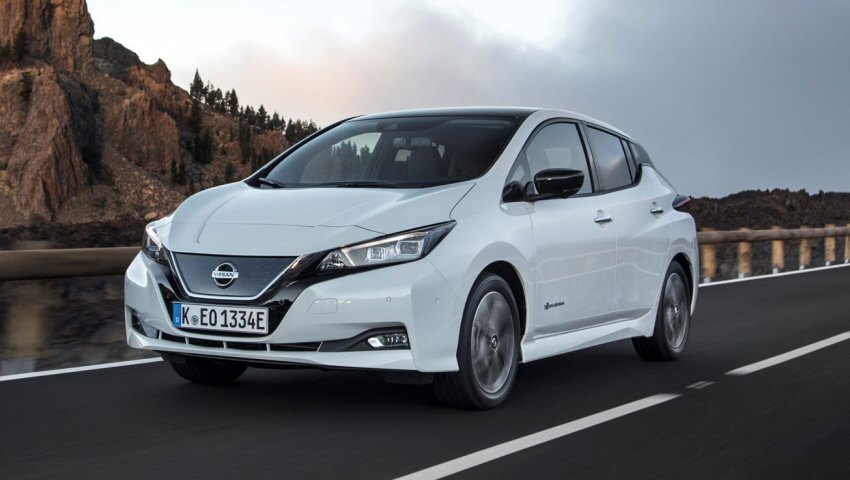
2018 Nissan Leaf reviewed
Thereís plenty to like about the old Nissan Leaf. It had a driving range of 155 miles, a smart interior and offered the kind of low running costs which electric car buyers are looking for. However, towards the end of its life it was starting to look a bit outclassed by more modern rivals such as the Renault Zoe and Volkswagenís E-Golf. This is why Nissan created the latest incarnation of the Leaf. With a greater diving range and a bigger focus on safety than before, this Leaf could, on paper at least, win with class honours. However, will it convince buyers to buy an electric car and how well does it compare to its key rivals? In this article weíre going to find out.
Unlike on most cars lifting off the accelerator in an electric car like the Nissan Leaf would cause it to slow down due to the work thatís being put in by the degenerative braking system. This harvests extra energy from braking to feed back into the battery and help you go further. In the Leaf and most other electric cars you have an extra mode called B-Mode. What this does is exacerbates this effect and causes you to slow down even faster. However, the Leaf goes even one step further because if you put this car into the so-called E-Pedal mode then when you take the foot off the accelerator the whole car seems to slow down to the point where you could effectively drive it using only one foot.
The Nissan Leaf is no slouch. It can reach sixty miles per hour (mph) in just 8.2 seconds which is faster than both of its key rivals. It will also keep going to a limited top speed of 89 mph. The big question here however is range. This is the thing that electric car buyers are really looking for when buying a car like this. So, they are looking at how far you can go between charges. In the Leaf this is an official 235 miles. However, itís important to know that the test that decided this official range is wholly unrepresentative of real-world driving. Therefore, youíre not likely to get anywhere close to that in the real world. Realistically youíre probably looking at around 108 in typical British conditions. This is still more than the Volkswagen E-Golf but less than the Renault Zoe.
Like with most electric cars, if you put your foot down then you do get an instant surge of power and the Leaf feels a little akin to a hot hatch in that respect. It stays slightly more upright that both of its key rivals through corners and has a slightly firmer ride around town too.
The interior of the Nissan Leaf is fundamentally a huge improvement over that of the old car. However, we found that the driving position is a little flawed in that you sit nice and high up but the fact that thereís no reach adjustment in the steering wheels means that youíre likely going to sit with the steering wheel slightly away from you or pulling too close to it. This can really hamper your comfort on longer trips. At least you get a good view out of the front of the car making it easier to see where youíre going to park. However, if you want to look over your shoulder to the rear then the carís heavily styled back-end can make viewing difficult. Fortunately you get front and rear parking sensors and even a reversing camera to help.
The 7-inch touch screen infotainment system comes as standard on every Nissan Leaf and is loaded with features. For example, you get DAB radio, sat-nav, Bluetooth and USB connectivity. Itís also get Apple Car play and Android Auto which means that you can control most of the features of your smartphone using the carís interface. On the whole itís pretty easy to use too thanks to the logical menus and big icons. Less impressive however is how low resolution the screen actually is. Itís just not as sharp as what youíd find in something like the VW E-Golf.
Interior space is where the Nissan leaf starts to gain an advantage over its rival, the Renault Zoe. This is because itís significantly larger in size. This is most evident in the front where youíve got lots of space to stretch out along with places to put your various odds and ends. The door bins will easily take a medium sized water bottle while thereís also a large central storage area under the armrest as well as a glovebox.
When you sit in the back youíll find that itís similarly spacious as in the front. Two six footers can sit easily behind one another and still have enough room. Unfortunately, itís a different story when it comes to headroom as larger passengers may find their heads brushing against the roof lining. Try and fit three people along the rear bench and everyone will feel the pinch, especially as the middle passenger has to straddle the tunnel in the floor.
Thereís more space in the boot of the Nissan Leaf than what youíll find in either a Renault Zoe or VW E-Golf. Therefore, loading a couple of large holiday suitcases, or a large weekly shop, should present you with no trouble. Unfortunately, thereís no adjustable boot floor on offer so youíre going to have to contend with a rather significant load lip when trying to heave items over. You can at least extend the load bay if you need to by using toggles on the back of the rear seats. This folds them forwards and gives you a larger area if you need to move some furniture or some DIY items.
The Leaf, along with its key rivals from Renault and Volkswagen, all qualify from the lowest band of company car tax. Therefore, it makes a good deal of sense for company car drivers at present. However, itís worth remembering that if you buy privately on a PCP finance deal, as most buyers will, youíll need to spend a lot of time in the Leaf and do a lot of miles before it starts to save you real money. Itís also worth noting that charging an electric car is vastly cheaper than paying for petrol or diesel. Also, charging the Leaf takes just eight hours through a standard seven kilowatts home charging unit or just four minutes using the kind of fast charging equipment youíre likely to find on a motorway service station.
You do get plenty of kit with the Leaf especially if you go for our recommended N-Connector models. These come with 17 inch alloy wheels, heated seats, front and rear parking sensors, climate control and even keyless entry. You also get automatic emergency braking and six airbags.
The Nissan Leaf is one of the best electric cars on the new or used car market. It offers excellent performance, a large boot and plenty of kit. In fact, weíd go as far as saying that itís one of the most tempting propositions for electric motoring weíve found. If you like the idea of Nissanís electric offering then please take a look at the new or used Nissan Leaf cars for sale we have on DesperateSeller.co.uk.













